Roomba j7 vs j7+: Is There Even a Difference?

Roomba J7 vs. J7+ is the newest debate as far as Roombas are concerned. So if you are wondering what sets the two models apart, you are at the right place.
Recently, iRobot unveiled two new robot vacuums, the Roomba J7 and Roomba J7+. The duo comes with several extras that make them a cut above the rest. Unfortunately for buyers, it’s hard to tell the difference between the two, but here at Robotbox, we have the answers.
The difference between the Roomba J7 and J7+ is the accessories included. The Plus model comes with the iRobot CleanBase unit. On the other hand, the base model doesn’t have this accessory, but it works with the automatic self-emptying bin technology.
To find out more about the iRobot J7 series, read along.
Roomba Amazon Prime Day 2025
Roomba J7+ (7550)
The Roomba J7+ is the ceiling model and was also released in September 2021. This robot vacuum comes with the revamped iRobot CleanBase unit plus the disposable bags, so it is ready for automatic self-emptying.
When it comes to specialty, it’s also ideal for bare floors, low pile carpets, and pet messes.
Comparison Table
Which one to choose Roomba J7 or Roomba J7+?
3 Reasons to Choose the Roomba J7+
- Clean Base Automatic Dirt Disposal Unit: J7+ automatically empties the 0.5L dustbin in the Disposal unit to keep it there for a month.
- Keep out zones: Digital boundary technology allows to make in the app Keep Out zones much better than physical virtual walls.
- 7-day cleaning schedule: In the smartphone application, the owner can create a 7-days cleaning schedule and launch and stop the J7+ remotely.
Roomba J7 vs. J7+ Comparison Review
Now, on to the main business of the day, how does the Roomba J7 compare to the J7+. Well, like earlier mentioned, these two Roombas are identical only that the plus model comes with more accessories. Otherwise, they share all other features.
1. Design and Aesthetics
The first talking point in this Roomba J7 vs. J7+ comparison review is the design and aesthetics. Here, we will look at the robot’s shape, diameter, height, and finish. So let’s get into it.
There is no difference between Roomba J7 and J7+ in terms of design and aesthetics. This is with regards to the robot vacuum only, not the CleanBase unit.
The Roomba J7 and J7+ are both round-shaped robot vacuums. Unfortunately, that means they can’t handle the wall edges satisfactorily, like the Roomba S9/S9+ that comes in a D-shaped design. When it comes to dimensions, the duo has a 13.3-inch diameter and stands at 3.4-inches. The low profile design allows the Roomba J series to go under most household furniture such as coffee tables, kickstands, sofas, beds, and so on. Regarding weight, booth robot vacuums are 7.49 lbs.
Next is regarding the finish. The new J7 Series robot vacuums are silver on black. There is a single control button and the iRobot logo at the top interface.
2. Cleaning Performance
To start, the iRobot Roomba J7 and J7+ are robot vacuums only. They can’t mop, but courtesy of Imprint® Link Technology, they can sync with the Braava M6 for simultaneous vacuuming and mopping.
Robot vacuums are highly specialized. You will find robot vacuums for bare floors, carpets, pet hair, etc. The Roomba J7 has been customized to handle bare floors such as hardwood, tile, laminate, vinyl, and more. It is also suitable for vacuuming low pile carpets.
The best part about this robot vacuum is its performance when it comes to handling pet messes.
The brushroll can pick up both short and long pet hair with minimal chances of tangling. What’s more? iRobot promises that the J7 is intelligent enough to avoid sucking dog poop – you understand how messy it can be when your robot takes on dog poop..
The Roomba J7 Series is equipped with a dual rubberized multi-surface brushroll that agitates and lifts dirt effectively. It is assisted by a side sweeping brush that reaches dirt along wall edges and deep corners. Regardless of the length of pet hair, the Roomba J7’s primary brush is resistant to tangling. When it comes to vacuum power, the J7, despite being the latest Roomba model, comes with an old motor that delivers 900pa at peak power.
As for filtration, this robot vacuum has AeroForce high-efficiency filters that capture 99.9% of allergens, dust, dust mite, and other unpleasant elements in the atmosphere.
Interestingly, the J7 and J7+ come with a 0.5L onboard bin that can be emptied automatically when the robot docks at the Clean Base® Automatic Dirt Disposal unit. The J7+ comes with the Clean Base® Automatic Dirt Disposal unit and 2 dirt disposal bags. A single bag can hold up to a month’s dirt.
For the record, the Roomba J7 uses a different Clean Base unit. It is shorter and wider and boasts a sleek design compared to the original CleanBase unit that the other self-emptying Roombas use. It also has a clever compartment for keeping the extra bags.
3. Cleaning Test Results
As is the norm, we tested the Roomba J7 and J7+ in a real household setting. Some of the dirt we used include sugar, wheat flour, rice, kitty litter, cereals, and sand pebbles. Below is an illustration of the results.
4. Battery and Runtime
The battery and runtime of a robot vacuum are very important as it determines the size of floor the robot can clean on a single charge. As far as battery and runtime are concerned, we will assess the battery technology used in the J7 and J7+, battery capacity, runtime, and power management. So without further ado, let’s get into it.
The Roomba J7 and J7+ are the same when it comes to battery and runtime.
iRobot equips the two robot vacuums with a Roomba® i8 Denali 2210mAh battery, the same one used in the Roomba i8. This battery can offer a cool 90 minutes runtime which is enough juice to vacuum a small to medium-sized apartment on a single charge.
When it comes to power management, the Roomba J series robot vacuums will automatically dock on the charging base once the battery levels go down. The recharge time is 2-3 hours. After recharging, the robot will resume cleaning without being prompted. All this is courtesy of iRobot’s patented smart recharge and resume technology.
5. Navigation and Mapping
One of the areas these two new Roombas excel in is navigation and mapping.
- Roomba J7 and J7+ boast a VSLAM navigation system dubbed iAdapt 3.0 with Imprint Smart Mapping. This system relies on obstacle detection sensors and a front-facing camera that processes images of obstacles in real-time. As a result, you can trust the Roomba J7 in a high-traffic room with many obstacles. One unique feature of the J7 is PrecisionVision Navigation which enables the robot to identify and recognize the common obstacles such as socks, shoes, power cords, dog poop, etc.
- When it comes to floor mapping, the Roomba J7 knows your home just like you do. To start, the robot creates accurate maps of your home. The J7 can also differentiate the kitchen from the bedroom. This is courtesy of Imprint Smart Mapping, a technology that gives Roombas the power to learn, map, and adapt to your home.
- Last is on boundary marking. Here, iRobot designed the J7 with digital boundary technology. As the name suggests, this is a containment feature that allows users to create boundaries right from the app. Known as Keep Out Zones is a better option compared to the physical barriers dubbed Virtual Walls.
6. Smart Features and Convenience
A good robot vacuum should be smart to allow for syncing with other connected devices. Smart devices, including Roombas, also facilitate remote operation.
The Roomba J7 is a smart robot vacuum with all the bells and whistles that the high-end Roombas boast, plus some extras. The robot is equipped with 2.4GHz WiFi compatibility that allows for remote operation via the iRobot Home app, as well as voice assistants.
On the app, homeowners can access a wide range of control options. For example, you can set a 7-day cleaning schedule, launch a cleaning session, stop a cleaning session, send the robot vacuum to a specific room, customize cleaning maps, view cleaning reports, and so on.
This robot vacuum is also powered by iRobot Genius 3.0. For starters, this is an innovation that custom tailors your cleaning needs depending on your habits, home, and seasons. For example, during spring and fall, when your dog sheds more hairs, iRobot Genius Home Intelligence will tell the robot vacuum to vacuum more often.
The J7 has all the app features that the Roomba i7 and S9 boast, but iRobot Genius 3.0 has some extras as discussed below.
- First, the J7 is Clean While I’m Away. If you don’t want to be disturbed by the robot vacuuming while in the house, this feature will come in handy. As the name suggests, Clean While I’m Away uses your phone’s location to detect when you have left the house so it can start cleaning. If you get home when it is cleaning, it will also be aware of your presence and automatically pause cleaning.
- Cleaning Time Estimates is another great feature that the new Roomba J7 and J7+ tag along with. If you are expecting visitors and are not sure whether the cleaning will be done by the time they arrive, this feature will come in handy. The Roomba maps your home in real-time, and with high accuracy, it calculates the time it will take to complete the job.
- For easy operation, iRobot also engineered this robot vacuum with Smart Map Coaching and Room Name Suggestions, which helps users during the initial onboarding. The feature helps in the personalization of Smart Maps to ensure that the robot is optimized efficiently and intelligently to navigate around seamlessly.
- The last new feature that the J7 comes with is Quiet Drive. Let’s face it, Roombas can be noisy, so iRobot borrowed a leaf from Neato. Quiet Drive is a feature that turns the Roomba’s motor off when moving from the dock to the target location, be it the kitchen, bedroom, or living room.
Is Roomba J7+ a Good Robot Vacuum?
Yes. The Roomba J7 is equally a good robot vacuum. It can handle all types of bare floors, from tile to vinyl, and laminate among others. You can also rely on the J7+ to vacuum low pile carpets and pet messes.
Notably, the J7+ comes with the iRobot CleanBase unit, so homeowners don’t have to worry about emptying the bin after every cleaning session.
Roomba J7 vs. J7+: Our Verdict
That’s the end of this Roomba J7 vs. J7+ comparison review. As discussed above, the two Roombas are all the same save for the fact that the Plus model comes with extra accessories at a higher price. So at the end of the day, the question is, do you want the extra accessories?
If you want a robot vacuum that empties itself, go for the Roomba J7+. However, if you are on a budget or don’t mind emptying the bin manually, then the Roomba J7 is a great deal.






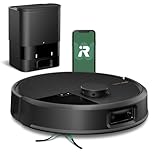





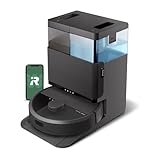


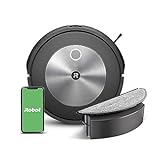







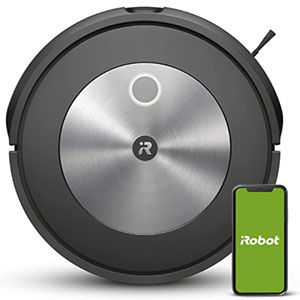
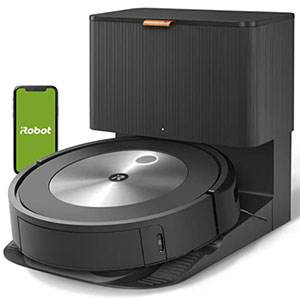





















Butch
J7 seems like the way to go. Because you need to clean out hair from the brush, so might as well do it every time you empty.
Dick Mittington
Hi, everyone! I have recently bought iRobot Roomba and want advice. The manual says it works very well on hard floors and carpets. Though I have a low-pile carpet in my sitting room, I noticed that the machine does not work as perfectly on it as I would like to see. I just don’t map this rug anymore and clean it in an old-fashioned way – by hand. How can it be that it vacuums a thick-pile carpet in my bedroom much better than that low-pile rug?
Swartzcop Kennedy
The questing is interesting, but I don’t see any problems with either thin rugs or thick carpets. Roomba J7 works equally efficiently on both. You just map the house in your app, and the map shows where the carpets are in your house. There may be an issue with the adjustments, so you need to check it. Even if you have a heavily shedding dog in your household, you can always map your vacuum for the most efficient working mode on the carpet fully covered with the dog’s fur and other debris.
Martha Sanchez
Hello! I have a question about the iRobot J7+. My house is very big – about 1,800 square feet, so it may take up to six hours to clean it everywhere. How long can this vacuum run without charging? I am usually pressed for time, so I don’t want to waste it on continuous recharging and waiting.
Swartzcop Kennedy
Sorry for the long reply. Unfortunately, Roomba J7+ cannot run for as long as 6 hours. It can work for about 45 minutes up to one hour and a half, depending on the mode and cleaning difficulty. Then, it needs to go back to its dock, recharge, and after that, it starts from the same place it left off. Recharging takes about an hour, and you won’t be able to find anything on the market that can recharge as quickly as that.
Laura MacGregor
Hi there! I have a big family with four kids, two dogs, and a cat. It’s an awful mess every day, and I need an efficient robot vacuum to deal with it. However, I am confused about the choice. J7 or J7+ are OK, but can they avoid things scattered across the floor? I mean, all those socks, underwear, charging cables, shoe laces, and pet mats and rugs? And, of course, the paper = the receipts and small pieces, all that garbage.
Swartzcop Kennedy
The question is crucial for such a big family as yours. However, the vacuum cannot detect and avoid smaller items. it will push the socks around, suck in charging cables if they are left loose on the floor, and they will stick in the brushes, and shoe laces will also be caught and get rolled into the brushes. Small paper scraps and receipts will get sucked up and clog the bin. As for bigger objects, like pieces of linen, dog mats, jeans, shirts, or coats on the floor, Roomba will push against them and then change its direction completely. So, you will need to put all these things aside before the start of the vacuum, or it may get out of order over time if all those trifles continuously get sucked into it. Or purchasing a mechanical cleaner is better; you will never have that sucking problem.